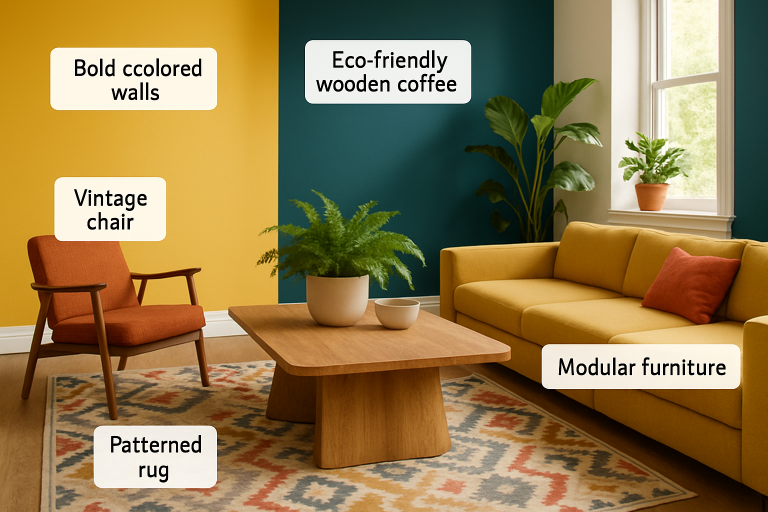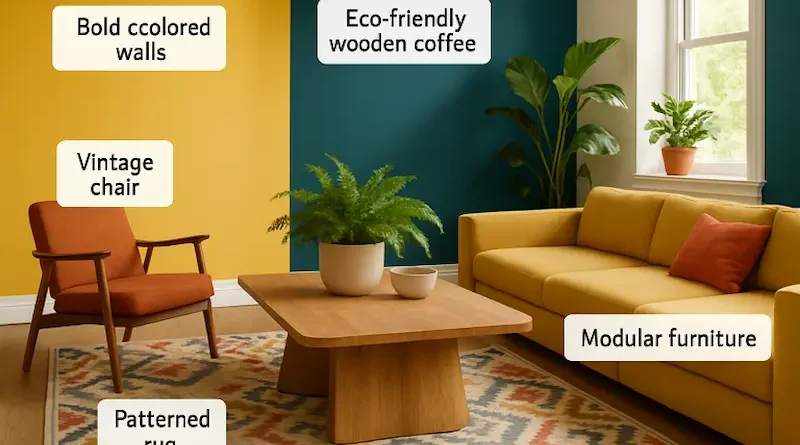Creative Trends in Modern Interior Design
As the landscape of home and office decor evolves, modern interior design places a strong emphasis on expressing individuality, functionality, and environmental responsibility. Today’s rapidly changing world demands spaces that are not only visually appealing but also serve multiple purposes and remain adaptable to diverse lifestyles. Homeowners and professionals alike increasingly seek innovative approaches to designing spaces that capture both personal style and current sensibilities. Whether renovating a single room or revamping an entire property, collaborating with an experienced interior designer can help turn a creative vision into a sophisticated and livable reality. Interior designers use their expertise to balance practical needs and personal tastes, maximizing flow and functionality in every corner of a home or office.
From bold colors and sustainable materials to flexible layouts and biophilic influences, today’s design inspirations are driven by a unique blend of creativity and practicality. Rather than simply filling a room with trendy pieces, homeowners now focus on finding meaningful design solutions that support their daily routines, foster wellness, and make a positive impact on the environment. By understanding how these trends play out in real-world interiors, you can make thoughtful decisions that enhance both beauty and utility in your surroundings, helping spaces feel distinctive and timeless.
Embracing Bold Colors and Patterns
The era of purely neutral interiors has given way to a bold embrace of vibrant hues and intricate motifs. Rich color palettes—think sapphire blues, emerald greens, and golden ochres—give rooms an invigorating spirit and make a powerful design statement. Carefully chosen accent walls, painted ceilings, or unexpected bursts of color on cabinetry can transform a mundane room into something memorable and full of personality. Patterns ranging from elegant Art Deco geometrics to lively florals add dimension and movement to walls, furnishings, and textiles, making spaces visually dynamic and emotionally uplifting. Design strategies such as “color drenching,” where a single shade envelops walls, trim, and ceilings, create a cohesive and striking effect that energizes interiors. This expressive approach has found its way into celebrity homes as well as curated boutique spaces, illustrating its versatility and broad appeal. Experimenting with color and pattern empowers people to communicate their individuality and keep spaces feeling fresh and inspiring.
Prioritizing Sustainability and Smart Materials
Sustainability is no longer an afterthought; it is the foundation of intelligent design. Eco-friendly interiors seamlessly blend style with purpose, promoting the well-being of both the planet and the people who inhabit these spaces. Energy-efficient appliances, reclaimed wood, recycled glass, and rapidly renewable materials like bamboo are increasingly standard choices, allowing homeowners to reduce waste and carbon emissions. Integrating smart home technology further advances the eco-friendly mission by allowing property owners to monitor and reduce energy consumption with intelligent thermostats, smart lighting systems, and solar power solutions. These innovations can significantly lower utility costs and extend the lifespan of a home’s core systems. Environmental stewardship also extends to non-toxic finishes and natural fiber textiles, which contribute to healthier indoor air quality, a particularly valuable factor for families with children or pets.

Blending Vintage and Modern Elements
Pairing antiques with contemporary pieces is a favored strategy for designers seeking to add depth, personality, and character to any space. Vintage light fixtures, repurposed architectural details, and retro furnishings serve as conversation starters, balancing the crisp lines and minimalist sensibility of modern design. This hybrid aesthetic allows for the creation of truly one-of-a-kind environments that feel curated rather than staged. The interplay of old and new brings warmth to sleek spaces, fostering a sense of curated individuality. This trend thrives on contrast—softening cutting-edge interiors with nostalgic charm, all while telling a story that is uniquely your own. By highlighting beloved heirlooms, thrifted treasures, or artisanal crafts beside contemporary art or statement furniture, you invite authenticity and a sense of history into your home. This unique balance ensures your home never feels generic or impersonal.
Incorporating Biophilic Design
Biophilic design is about more than simply adding a few houseplants; it aims to deepen the connection between indoors and the natural world. Expansive windows, indoor gardens, water features, and organic shapes evoke a sense of tranquility and well-being, transforming even urban dwellings into peaceful retreats. Living walls and lush potted plants boost oxygen levels and purify air, while abundant natural light helps regulate mood and circadian rhythm. According to NBC News, some new biophilic buildings incorporate quirky, unexpected features such as indoor streams, tree-filled atriums, and spiral gardens to bring nature even more directly into daily life. These elements support mental clarity and physical health, addressing the growing desire for tranquility amid the stresses of modern life. This holistic approach is a response to the growing awareness of the emotional and physical benefits that nature-inspired environments bring, especially in urban settings. Natural wood, stone surfaces, and earthy palettes further blur the lines between outside and inside, inviting comfort and harmony into every room. Thoughtful integration of these elements not only enhances the beauty but also fosters a healthy and calm living environment.
Designing Flexible, Multi-Functional Spaces
Adaptability has become a top priority as homes increasingly serve multiple functions—office, classroom, gym, and sanctuary—all within the same footprint. Open layouts, movable partitions, and modular furniture make it easy to customize rooms to suit evolving needs without unnecessary renovations. Whether it’s a dining table that doubles as a desk or a guest room furnished with a Murphy bed, these solutions maximize utility without sacrificing style. Creative zoning techniques, such as rugs, lighting, or screens, help define distinct areas within a single open space, supporting effortless transitions throughout the day. The ability to reconfigure spaces on demand is particularly valuable in urban apartments and for families with shifting routines. Modern technology, like wireless charging tables and built-in speakers, is making multi-use spaces even more adaptable and streamlined.
Conclusion
The landscape of modern interior design is as varied as it is innovative, reflecting not only fleeting fashions but also deeper shifts in the way we live, work, and interact with the world around us. By embracing bold aesthetics, sustainable choices, vintage twists, natural influences, and adaptable layouts, anyone can create interiors that feel both current and enduring. Stay inspired by trends that prioritize quality of life, creativity, and environmental stewardship, and your spaces will remain truly transformative for years to come. With the right strategies and a well-informed approach, updating your interior does more than make a statement—it elevates well-being, functionality, and the overall experience of being at home.

